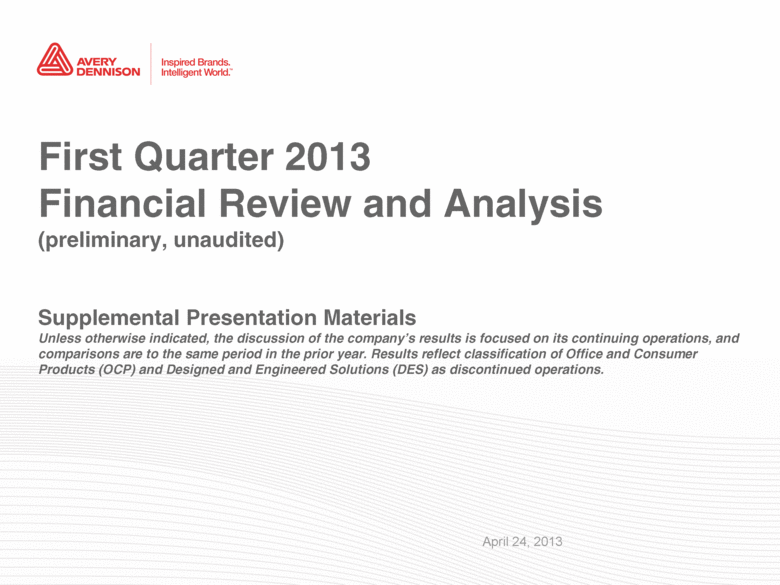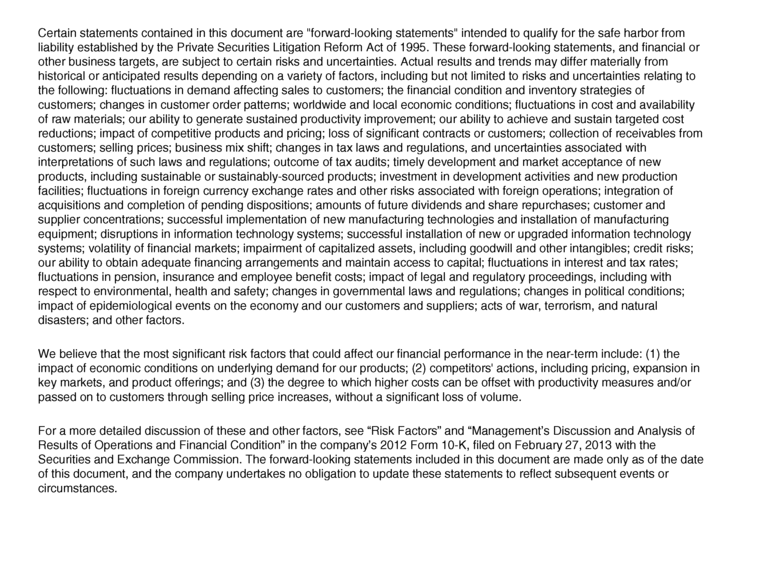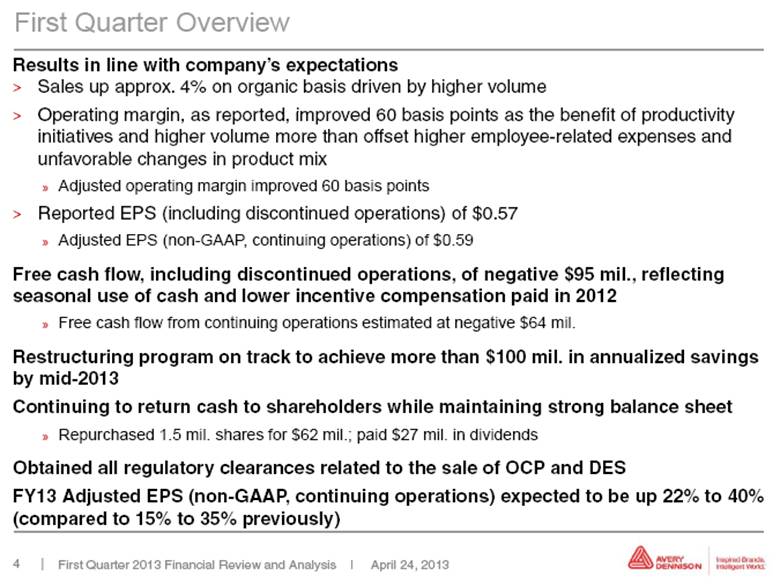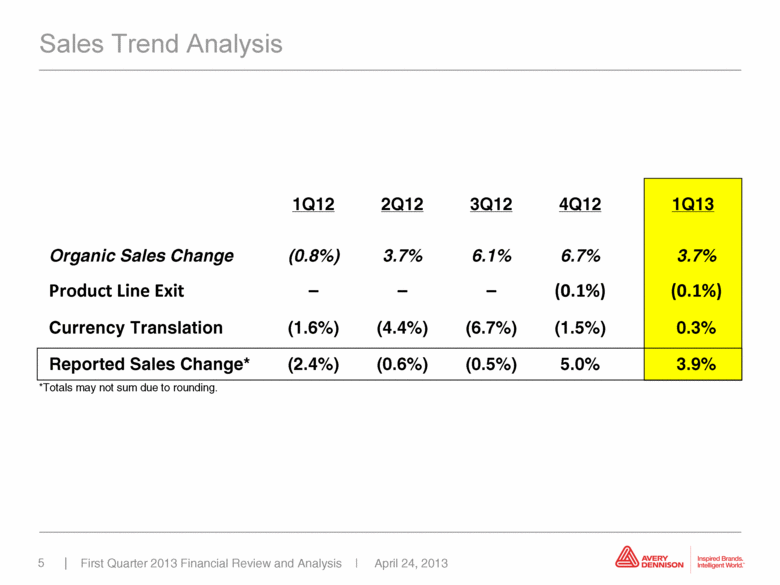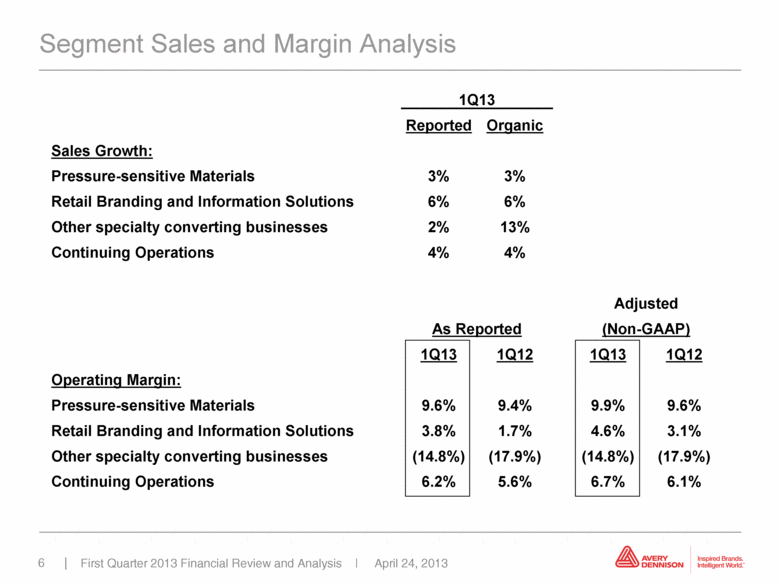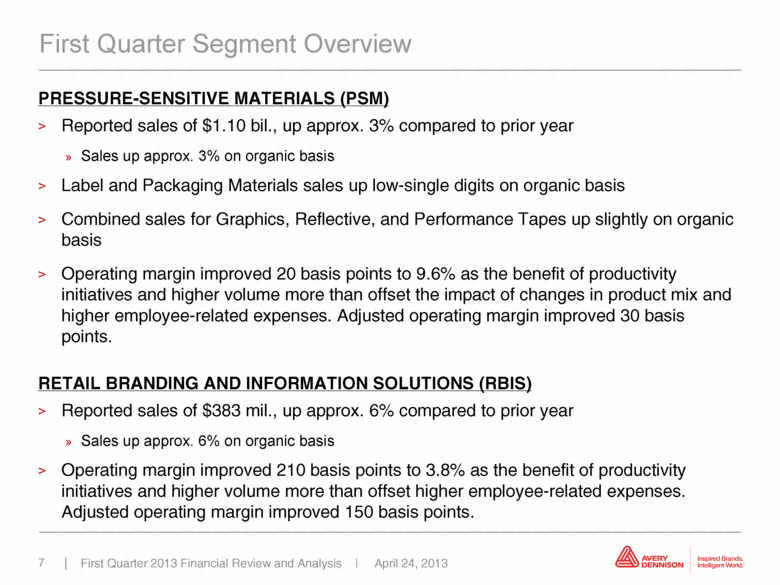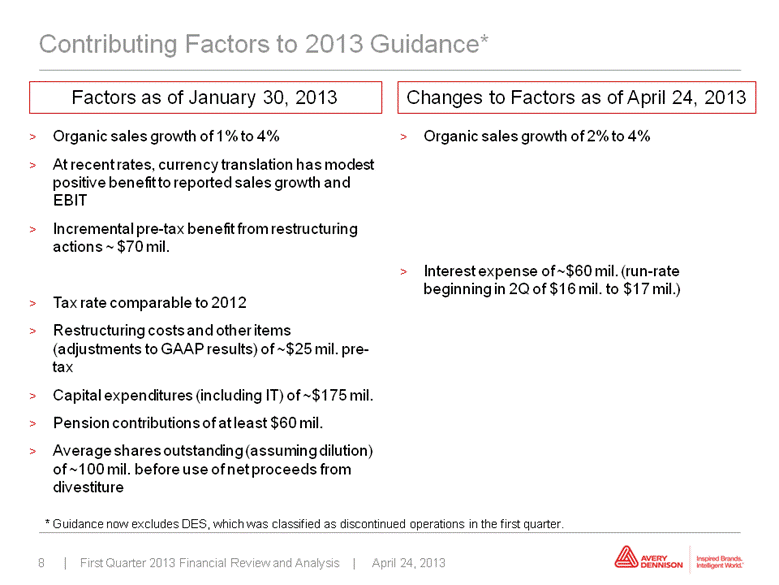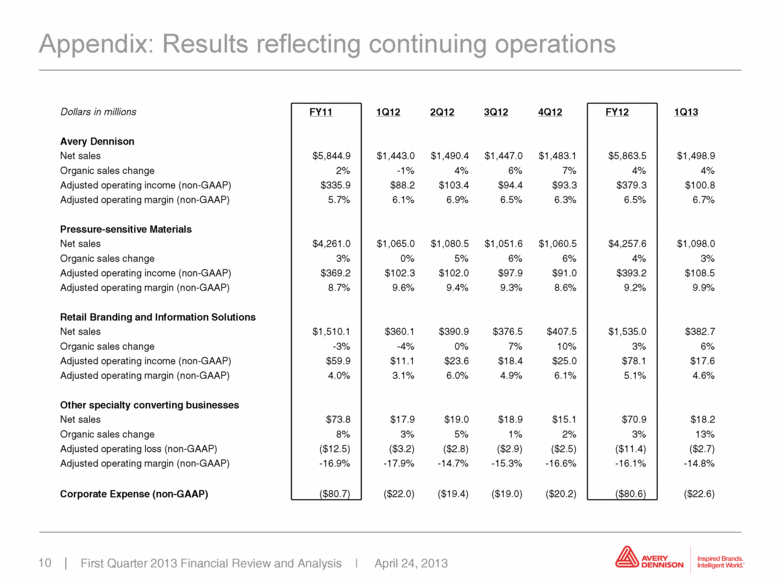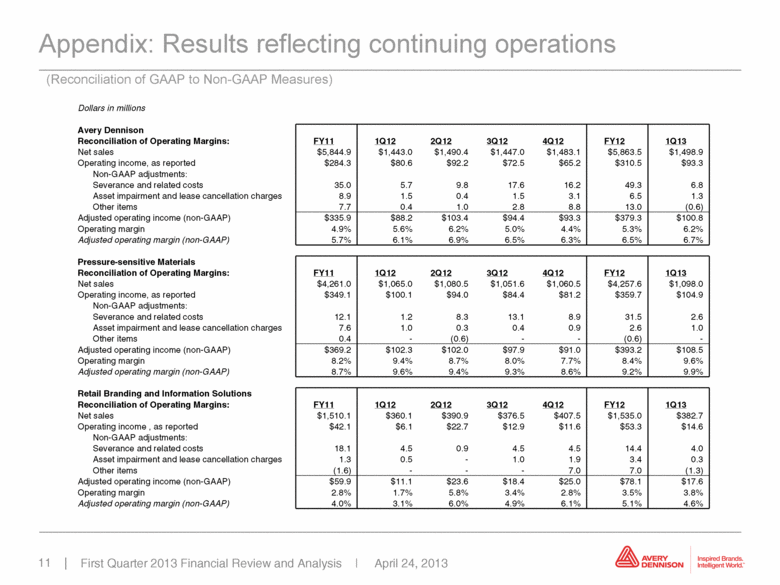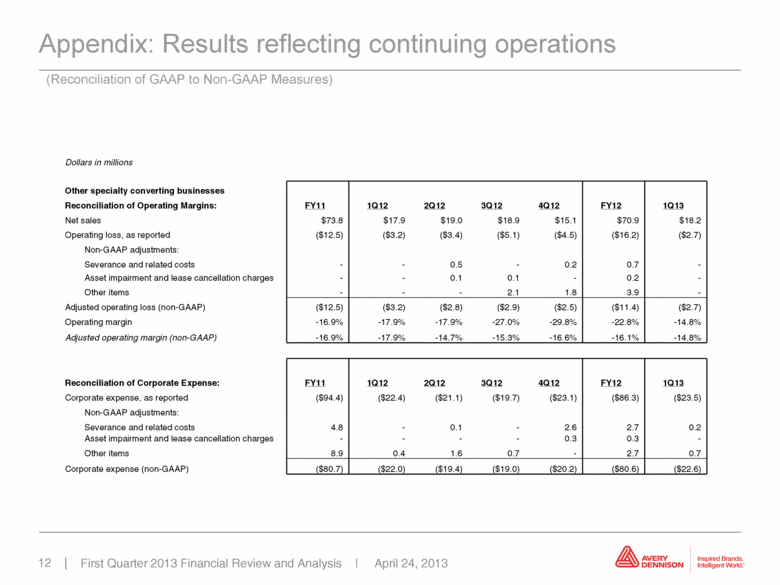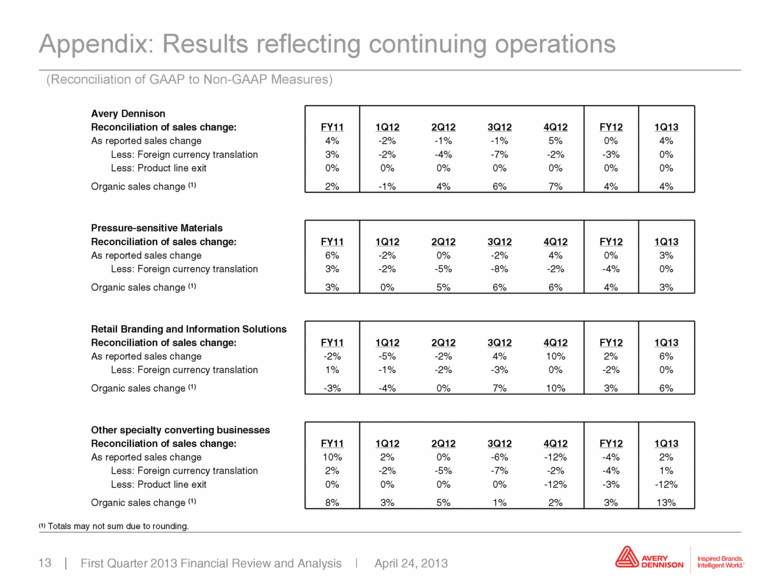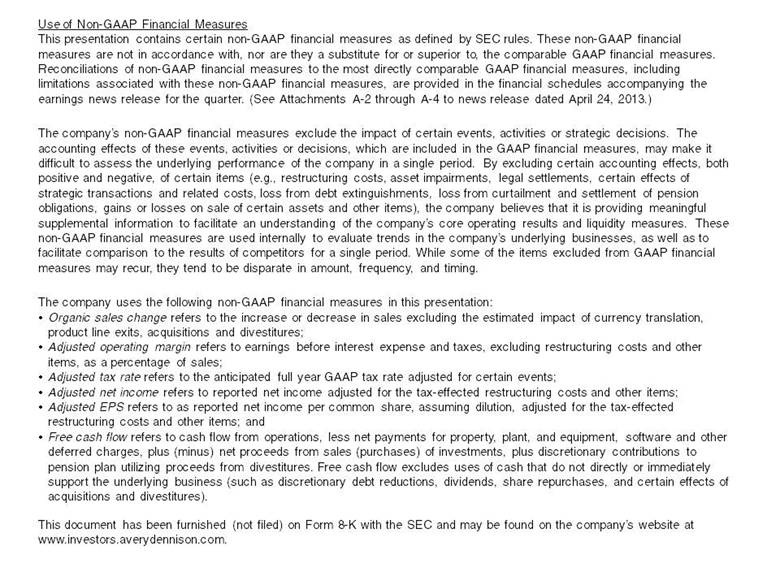
| Use of Non-GAAP Financial Measures This presentation contains certain non-GAAP financial measures as defined by SEC rules. These non-GAAP financial measures are not in accordance with, nor are they a substitute for or superior to, the comparable GAAP financial measures. Reconciliations of non-GAAP financial measures to the most directly comparable GAAP financial measures, including limitations associated with these non-GAAP financial measures, are provided in the financial schedules accompanying the earnings news release for the quarter. (See Attachments A-2 through A-4 to news release dated April 24, 2013.) The company’s non-GAAP financial measures exclude the impact of certain events, activities or strategic decisions. The accounting effects of these events, activities or decisions, which are included in the GAAP financial measures, may make it difficult to assess the underlying performance of the company in a single period. By excluding certain accounting effects, both positive and negative, of certain items (e.g., restructuring costs, asset impairments, legal settlements, certain effects of strategic transactions and related costs, loss from debt extinguishments, loss from curtailment and settlement of pension obligations, gains or losses on sale of certain assets and other items), the company believes that it is providing meaningful supplemental information to facilitate an understanding of the company’s core operating results and liquidity measures. These non-GAAP financial measures are used internally to evaluate trends in the company’s underlying businesses, as well as to facilitate comparison to the results of competitors for a single period. While some of the items excluded from GAAP financial measures may recur, they tend to be disparate in amount, frequency, and timing. The company uses the following non-GAAP financial measures in this presentation: Organic sales change refers to the increase or decrease in sales excluding the estimated impact of currency translation, product line exits, acquisitions and divestitures; Adjusted operating margin refers to earnings before interest expense and taxes, excluding restructuring costs and other items, as a percentage of sales; Adjusted tax rate refers to the anticipated full year GAAP tax rate adjusted for certain events; Adjusted net income refers to reported net income adjusted for the tax-effected restructuring costs and other items; Adjusted EPS refers to as reported net income per common share, assuming dilution, adjusted for the tax-effected restructuring costs and other items; and Free cash flow refers to cash flow from operations, less net payments for property, plant, and equipment, software and other deferred charges, plus (minus) net proceeds from sales (purchases) of investments, plus discretionary contributions to pension plan utilizing proceeds from divestitures. Free cash flow excludes uses of cash that do not directly or immediately support the underlying business (such as discretionary debt reductions, dividends, share repurchases, and certain effects of acquisitions and divestitures). This document has been furnished (not filed) on Form 8-K with the SEC and may be found on the company’s website at www.investors.averydennison.com. |
